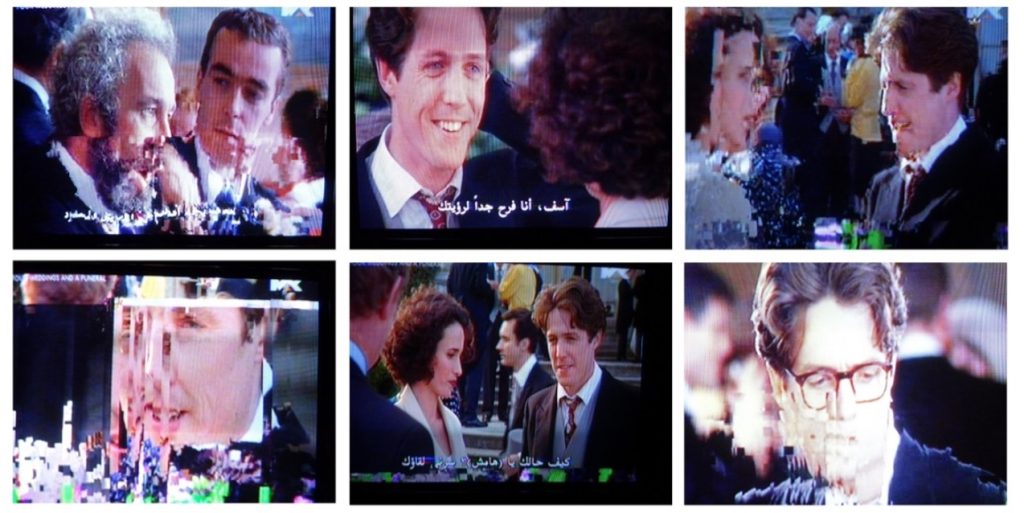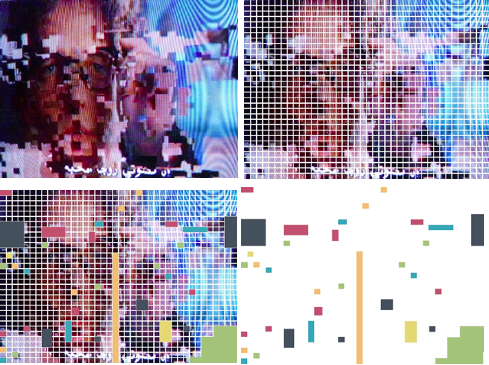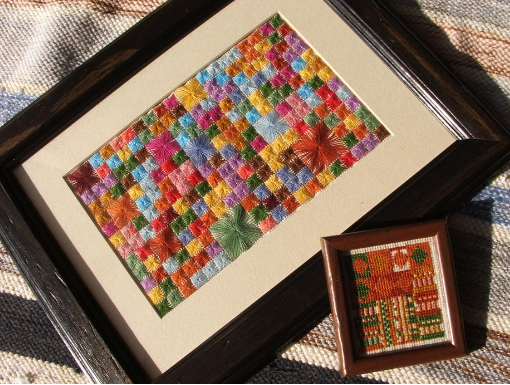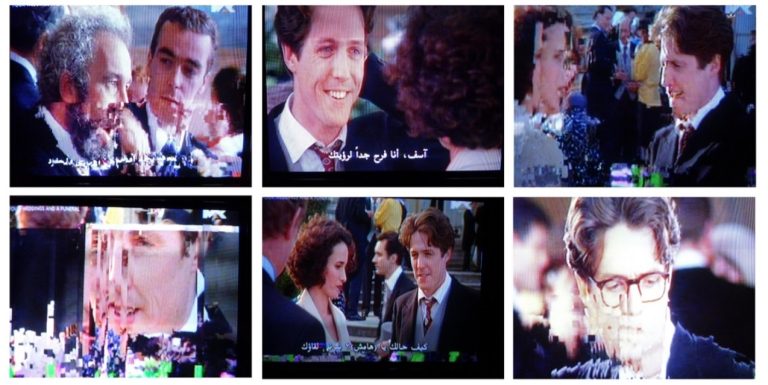Posted by Salem Al Qudwa

But why is the image distorted by pixelation on my flat TV screen at my house in Gaza? Why am I getting an abstract background texture? What is the reason behind these glitches and distortion on the screen broadcast via digital TV satellite channels?
For me, the TV screen distortion offers a form of generative art. Inspired by that, I made a series of abstract graphics by taking shots for the TV screen by my digital camera. But why do I consider the Four Weddings and a Funeral film as an exceptional source of the experiences I am going to talk about? Why not any other film?
The title of my piece has a double meaning: on the one hand, I intend to reflect the English and Western way of life in the sense of mirroring it; and on the other, of course, also to think about this symbolic distortion, to reflect on it. The first part of the film title “Four Weddings” suggests the following meaning in Quran: “Marry women of your choice, two, or three, or four; but if you fear that you shall not be able to deal justly (with them), then only one.” [Qur’an 4:3].
Watching Four Weddings and a Funeral in Gaza did not just reflect the global distribution of mass entertainment, but also signaled a proximity to death, distributable at the touch of a button by nearby Israeli drones. A drone is an unpiloted aircraft for intelligence with high power signals and microwaves. Within the private space of the home, the public concern, a constant public concern with safety becomes apparent. When there is a combat drone aircraft flying in the sky of Gaza, the signal power of the drone interferes with satellite television signals!

But what about other Palestinians who are sitting right now watching TV in Gaza? Life beneath the drones is still going on. The drones have become Israel’s weapon of choice in its attacks on Gaza. In Israel’s ‘Operation Protective Edge’ attacks in 2014, an estimated 37% of those killed died in drone attacks. Hundreds attend the funerals of those Palestinians killed in the Israeli air attacks on the Gaza Strip as the conflict with Israel deepens. This kind of example could be used to show that the public and the private are, in an unexpected way, intermingled. In some places in the world, you watch TV to forget about your daily life. In Gaza, you are painfully, and even fatally, reminded of it.
One of the insights into architectural space in Gaza is that most inhabited spaces have several functions according to circumstances. The school is a shelter, a temporary hospital, and not just a place for education. And the house is a prison cell where you have the feeling that you are been watched most of the time. Furthermore, Israel’s spatial control and management of family life in Palestine consistently blurs the distinction between public and private spaces, thus compromising people’s social interactions.
Back to the abstract graphics, I took a couple of those shots for the TV screen and transferred them into abstract digital art. By placing a grid over the original distorted image, I started filling some of those pixels randomly. The result could have been an endless number of abstract works with a white background filled with colourful squares and rectangles.

Later, my wife stitched through the top layer of fabric based on one of these and the result was another piece of art made by her hands. While I kept looking at my wife’s work which was hanged on one of the walls at the guest room of our house, I kept asking myself about the ownership of this piece: is made by my wife, or the distortion of the TV screen, or by the Israeli soldier who controlled the drone?



